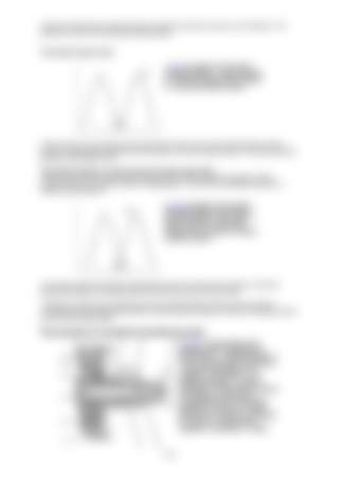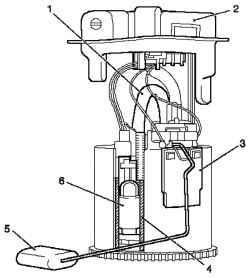Number of residual gas is determined by the overlap of valves and vacuum in the inlet pipe. The presence of vacuum in the inlet pipe throttle position.
Running the engine at idle Fig. 2.5. Diagram of the engine during the idling: I - intake valve lift; II - rise of the exhaust valve, ahead; III - minimal overlap of valves
Idle set minimum valve overlap, since a high value of the vacuum in the inlet pipe allows a large number of residual gas to fall back into the cylinders, even with a slight overlap. This ensures uniform operation of the engine at idle. Running the engine in a mode of small and medium-sized loads While small and medium-sized loads have large valve overlap, because the engine in these conditions allows for a greater number of residual gases. The result is a substantial reduction of nitrogen oxide emissions. Fig. 2.6. Diagram of the engine during operation in the mode of small and medium-sized loads: I intake valve lift; II - rise of the exhaust valve, ahead; III - minimal overlap of valves
In the upper range of the regime of partial loads, closer to full load, valve overlap is minimized, because the engine in this range require the maximum amount of fresh mixture. Adjusting the overlap valve replaced previously used technology of exhaust gas recirculation. To achieve maximum filling of the cylinder, is also important to agree on the time of closing the intake valves with the engine speed.
The principle of controlled camshaft sprockets Fig. 2.7. Cross-section of oil sending control camshaft drive intake valves: 1 - attachment bolt - a cover of the regulator of camshaft 2 - oil pipe to the chamber "A" regulator of camshaft 3 - block bearing camshaft, 4 - cams, 5 camshaft; 6 - oil feed to the cameras "B" regulator of camshaft; 7 toothed belt pulley 8 - separation chambers "A" and "B", 9 - bolts fastening the regulator of camshaft, 10 - rotor, 11 - a cover of the regulator of camshaft, 12 - Stator
140














































































































